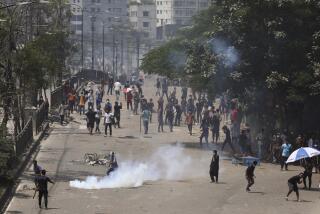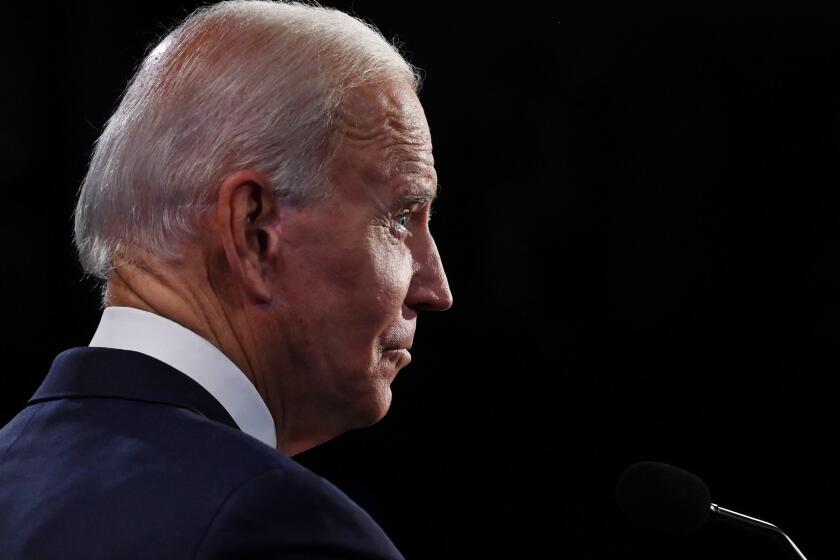Epidemic Rages Despite Plea to Other Nations : Aid: Stopping diphtheria’s spread requires money. But many countries need funds.
Alarmed by the diphtheria epidemic galloping across the former Soviet Union, the World Health Organization, UNICEF and the International Committee of the Red Cross declared an international health emergency in June and appealed for $33 million to help eradicate the deadly disease.
“This is the biggest public health threat in Europe since World War II,” declared Dr. Jo Asvall, WHO’s European regional director.
The response has been underwhelming.
Almost five months later, the campaign has raised less than half the desired amount of money and the epidemic rages on.
With international attention riveted on exotic new diseases, such as the horrifying and lethal Ebola virus and the steady spread of AIDS, the re-emergence of garden-variety killers such as diphtheria has attracted little notice. But given the skyrocketing increase in international travel to and from the former Soviet Union, public health experts warn that the world ignores at its own peril the surge in infectious diseases behind the old Iron Curtain.
“We’ve tried to explain that apart from humanitarian considerations, people ought to be concerned for their own good, out of fear of the epidemic expanding,” said Gordon Larsen, a WHO consultant in Copenhagen.
Last year, at least 20 cases of diphtheria were reported in Europe, including cases in Bulgaria, Finland, Germany, Norway and Poland, demonstrating the potential for the epidemic to spread through Europe and to the Middle East and Asia.
So far, there have been no cases of diphtheria imported into the United States. But the Atlanta-based Centers for Disease Control and Prevention, or CDC, has reports of two Americans who contracted the disease while in the former Soviet Union. The health watchdog agency “considers the epidemic to pose a risk for importation into the United States,” a CDC report warned.
Diphtheria is an entirely preventable disease and is almost never fatal if treated promptly. Its symptoms include sore throat, fever, swollen lymph nodes and sometimes a white mucus over the tonsils. Untreated, it can cause heart failure, paralysis and death.
Although nearly all Westerners receive childhood immunizations against diphtheria, many Americans neglect to have the booster vaccinations required to keep up immunity.
The CDC recommends a routine series of five vaccinations with a diphtheria-tetanus-pertussis vaccine for children and a booster shot every 10 years after that for life.
Diphtheria was controlled through childhood vaccinations in the former Soviet Union for 30 years. But as vaccination rates declined, an epidemic broke out in Russia in 1990 and quickly spread to the other republics that once made up the Soviet Union. The number of cases went from 839 in the Soviet Union in 1989 to 47,802 in the former Soviet republics in 1994. Last year, at least 1,746 people died of the disease--and probably more, since not all deaths are properly diagnosed.
This year, the epidemic continues, with the caseload in Ukraine and Georgia having more than doubled in the first six months of 1995 compared with the same period last year, said Dr. Iain Hardy of the CDC.
As of September, 33,695 cases had been reported to WHO from the 15 former Soviet republics. But a big surge is expected in the fall and winter, Hardy said.
A mass vaccination campaign is “just getting under way this fall” in most areas, but a large funding shortfall has hampered efforts, especially in the underdeveloped Central Asian republics, Hardy said.
Although diphtheria vaccine costs only about 10 cents to 11 cents per dose administered, “it’s just such a colossal effort to raise the funds to be able to vaccinate adults,” Hardy said. “It’s taken quite a long time for the international community to mobilize.”
Contributions have been received from the European Union, Italy, Ireland, Iceland, Norway, Denmark and Red Cross agencies in a number of countries, WHO consultant Larsen said. Even before the appeal, the U.S. Agency for International Development, or AID, had donated nearly $3.4 million for diphtheria control efforts in Armenia, Azerbaijan, Tajikistan and Moldova.
UNICEF has received donations and pledges for $9.2 million, nearly half of the $21 million it hopes to raise to pay for its part of the campaign, said Edmond McLoughney, a senior program officer in New York.
“We aren’t doing too badly,” McLoughney said. “There are a lot of competing appeals. . . . There’s Rwanda, Somalia, Angola, all of the African emergencies--Liberia, Sierra Leone, the countries where you have wars and breakdowns and where children are most at risk. And, of course, there’s ex-Yugoslavia, particularly Bosnia.
“There’s only a certain amount of money,” he said.
In the United States, however, the growing political hostility to foreign aid and the end of the post-Cold War euphoria are taking a toll on the AID programs aimed at helping Russia reform its health care system. The budget for Russia for fiscal 1994 was $75 million, but Congress rescinded $10 million; for 1995, the health care program is receiving only $10 million.
More to Read
Sign up for Essential California
The most important California stories and recommendations in your inbox every morning.
You may occasionally receive promotional content from the Los Angeles Times.






